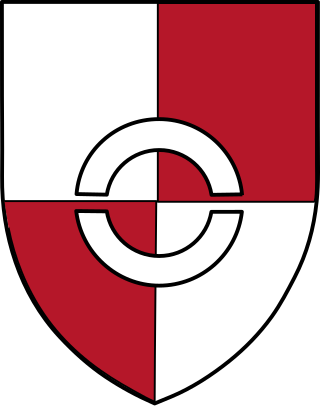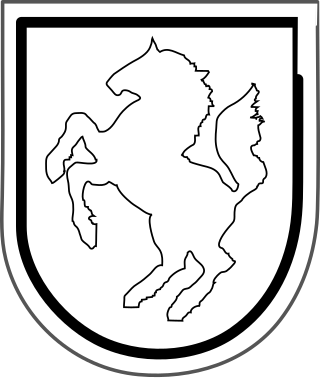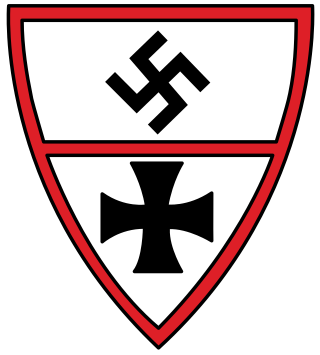History
The General Command XXXXIV. Armee Korps was established on 15 April 1940 in the Wehrkreis XVII (Vienna) and took part in the Battle of France in the section of the 6th Army. After the breakthrough over the Aisne, it advanced towards the Loire and occupied Orléans. In July 1940, the Corps was transferred to the General Government (Poland) and placed under the command of the 4th Army.
After the start of Operation Barbarossa (June 1941), again under the command of the 6th Army, the XXXXIV Army Corps, composed of the 9th, 262nd, 297th and 57th Infantry Divisions, operated on the Southern Bug, and took Sokal and Krystynopol. During the Battle of Brody (1941), the XXXXIV Corps was subjected to strong counter-attacks by the Soviet 15th Mechanized Corps. After withstanding the attack, the advance towards Koziatyn continued. In August 1941, during the Battle of Uman, the corps was subordinated to the 1st Panzer Army and advanced to the Dnieper after the battle. In September 1941, assigned to the 17th Army, the Corps, as part of Gruppe Schwedler, secured the Dnieper Section in the Cherkassy area during the Battle of Kiev with the 68th and 297th Infantry Divisions.
In January 1942, the Corps was pushed back in the Barvenkovo–Lozovaya Offensive by troops of the Southern Front (under Malinovsky) in the Izyum area. After the ensuing Second Battle of Kharkov, the Corps took part in the successful counter-offensive from 17 May, called "Operation Fridericus". During the German summer offensive, the Corps invaded the Caucasus from Sloviansk via the lower Don near Konstantinovsk in July 1942. After advancing towards Maikop, it tried in vain to break through to Tuapse on the Black Sea.
In the spring of 1943, the Corps was withdrawn to the Kuban Bridgehead. Pulled back to the Taman Peninsula in July 1943, the Corps was reassigned to the 6th Army on the Lower Dnieper and fought during October 1943 against the Soviet Lower Dnieper Offensive.
On March 13, 1944, the city of Cherson was lost to troops of the 4th Ukrainian Front after the Bereznegovatoye–Snigirevka Offensive. Pushed back to Moldavia, the Corps fought in the Jassy–Kishinev Offensive (August 1944), under command of Ludwig Müller. The corps was attacked by troops of the 3rd Ukrainian Front from Dubăsari, pushed back and surrounded at Chișinău and completely destroyed.
The Corps was officially dissolved on 27 September 1944 and never rebuilt.
XXXXVIII Panzer Corps, was a corps-level formation of the German Army which saw extensive action on both the Eastern and Western Fronts during World War II.

III Army Corps was a corps level formation of the German Army during World War II.

Carl Hilpert was a German general during World War II.

The VI Corps was an infantry corps of the German Army. It fought in several notable actions during World War II.

V Army Corps was a corps in the German Army during World War II.

German XI. Corps was a corps in the German Army during World War II.
VII Army Corps was a corps in the German Army during World War II. It was destroyed in August 1944 during the Jassy–Kishinev Offensive.

VIII Army Corps was a corps in the German Army during World War II. It was destroyed during the Battle of Stalingrad and reformed in mid-1943.
IX Army Corps was a corps in the German Army during World War II. It was formed on 1 October 1934 under the command of General Friedrich Dollman in Kassel with the camouflage name of Kassel and redesignated IX Corps after the creation of the Wehrkreis IX recruitment and training area.

IV Corps was a corps level command of the German Army (Wehrmacht) before and during World War II.
German XIII. Corps was a corps in the German Army during World War II. It was destroyed during the Lvov–Sandomierz Offensive and reformed in late 1944.
X Army Corps was a corps in the German Army during World War II. It was formed in mid-May 1935 from the Cavalry Division.
XIII Army Corps was a corps of the German Army during World War II. Made up of several divisions, which varied from time to time, it was formed in Nuremberg on 1 October 1937.
The XXIV Army Corps was a unit of the German Army during World War II. The unit was re-designated several times; originally being Generalkommando der Grenztruppen Saarpfalz, later Generalkommando XXIV. Armeekorps, then XXIV. Armeekorps (mot.) and finally XXIV. Panzerkorps.

XXXXII Army Corps was a corps in the German Army during World War II.
German XXX. Corps was a corps in the German Army during World War II.
German XXXV. Corps was a corps in the German Army during World War II.

XXXXIII Army Corps was a corps in the German Army during World War II.
German XXXIII. Corps was a corps in the German Army during World War II.

The XXVI Army Corps was a Wehrmacht army corps during World War II. It existed from 1939 to 1945. It was also known as Corps Wodrig during the Invasion of Poland.
This page is based on this
Wikipedia article Text is available under the
CC BY-SA 4.0 license; additional terms may apply.
Images, videos and audio are available under their respective licenses.









